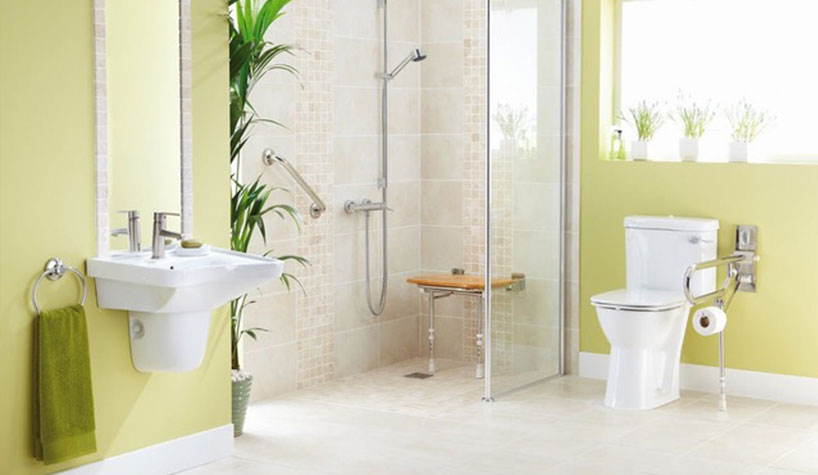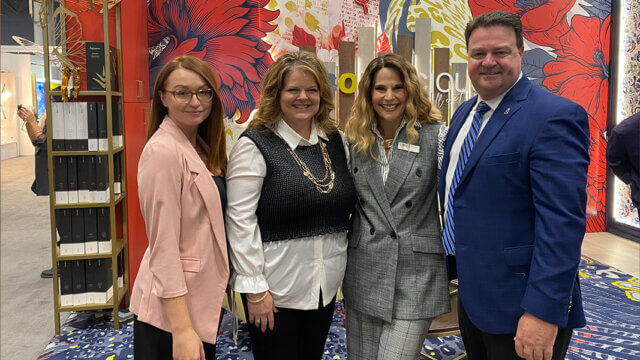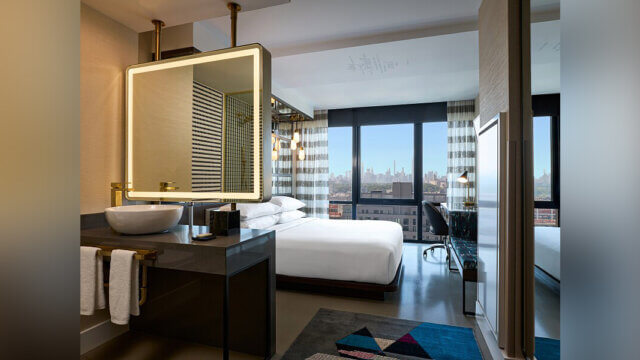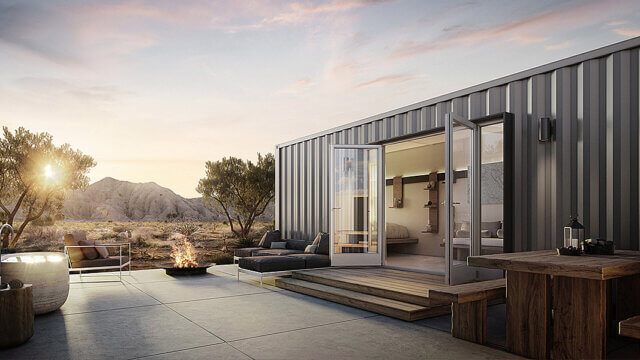LEEDS, ENGLAND—An aging population means more hotel guests have the potential for mobility problems, according to Tony Passmore, managing director of More Ability.
“The increasing age of our population means more and more people who visit hotels are experiencing mobility problems of varying degrees. This means getting in, or more importantly out, of the bath is difficult for many and could result in accidents,” said Passmore. “Shower enclosures or wet rooms are much more suitable for people with limited mobility as well as serving the general population.”
A subsidiary of Passmore Group, Leeds & Harrogate, the company has been carrying bathroom adaptations for more than 25 years since the need for this type of work was first identified.
“We operate principally in the domestic market, but given that this market is filled with the very customers who visit hotels, it makes our experience and knowledge very relevant,” said Passmore.
“As far as adapted bathrooms are concerned, these are usually clinical looking, almost pigeon-holing the customer. This goes back to the days when clinical looking equipment was all there was,” Passmore said. “There are many more products available now that are much more aesthetically pleasing that still have functional capability—perfect for the hotel industry.”
In terms of design challenges, bathrooms are often small, just big enough to fit the products. “It wouldn’t need much more space to be able to improve design, accessibility and usability—for example, using a level access shower or wet floor shower rather than an enclosure with a step,” he said.
In the modern home, the bathroom is becoming a feature and an experience. As hotels increasingly become influenced by the comforts of home, the focus on aesthetics is following.
“I feel it needs to be replicated in the hotel experience. If done well, this will enhance the customer experience considerably, resulting in advocates and customer retention and satisfaction, especially if there is an underlying need that you are addressing better than anyone else,” he said.
Passmore is seeing less of a need for a bath and more of a need for a level access shower or wet floor shower for ambulant and wheelchair users alike. Also, there needs to be uncluttered access to the showering area with no trip hazards, which, according to Passmore, is essential.
He outlined recommendations for an accessible hotel bathroom:
Flooring: The floor should be suitable slip resistant vinyl or tiles, and there should be strategically placed grab rails to assist the client in moving around the bathroom and in the shower area.
Seating: A shower seat is advisable, whether built in or a fitted folding seat, or a freestanding seat that can be issued when required (although the latter, perhaps, would make a customer put some effort into getting what they need, and fixed is always safer than removable).
Toilet: Consideration should be given to the height of the toilet, which should be slightly higher than the standard, allowing the customer to get on and off the toilet much easier, even if supported by a grab rail.
Temperature: Showers should be thermostatically controlled, to ensure there is limited chance of a customer being subjected to hot or even cold water should the shower be unable to maintain temperature. In such cases, able-bodied people can move out of the way easily, whereas less able cannot.
Doors: Entrance to the door should be wide enough to accommodate a wheelchair, and there should be sufficient space in the bathroom to provide an adequate turning circle for any wheelchair users to navigate around the bathroom.
More Ability strives to transform an existing space into something that not only meets the specific needs of the customer, but also provides lifetime accessibility with the intention of future proofing the bathroom to meet the needs of customers now and in the future.
“The mobility market has changed in recent years, with products migrating as our population ages and becomes more infirm. Consumers are increasingly demanding stylish and non-clinical looking equipment and product, which previously differentiated them from the general population, something that in our experience is very much frowned upon,” he said. “As leaders in our field, we’re very much at the forefront of creating bathrooms that are stylish and yet meet the specific needs of the customer. Often, there has to be compromise between functionality and aesthetics, but as expert designers we can—with communication, skill and experience—combine the two to create a bathroom to be proud of.”




